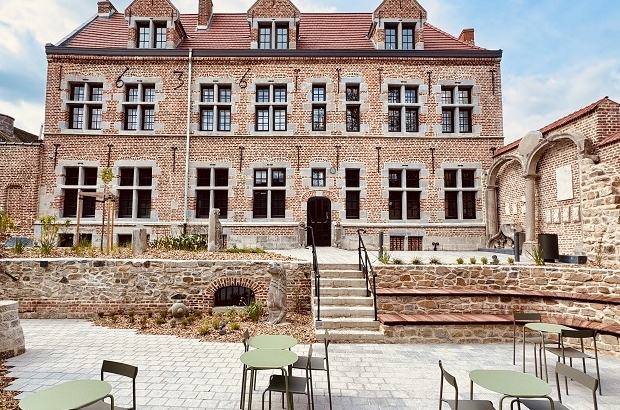- Daily & Weekly newsletters
- Buy & download The Bulletin
- Comment on our articles
Mons’ new heritage museum The Collections House offers a modern perspective of the city’s history
It’s a double celebration for the city of Mons this spring with the inauguration of its new museum complex CAP (Culture, Art and Patrimoine) and the opening of the major exhibition Rodin. A modern Renaissance.
The complex, located near the Grand Place, consists of three spaces: the newly-refurbished Fine Arts Museum, new heritage museum Collections House and the charmingly-named Hardenpont’s Buttery Pear Garden.
While the arts museum continues to host temporary exhibitions – including shows dedicated to major international artists – it is also committed to opening up its extensive and modern space to the public.
Meanwhile, the walled and terraced garden serves as the main gateway to the complex. Now freely accessible to the public from Rue Neuve, visual artist Raphaël Decoster has created a fresco along the path leading to the green space. It plays an important role in connecting the two museum sites. Visitors can stroll around a botanical and historical garden showcasing local sculpture and plant species, a collaborative permaculture garden and visit La Guinguette, an attractive outdoor space for coffee and drinks.
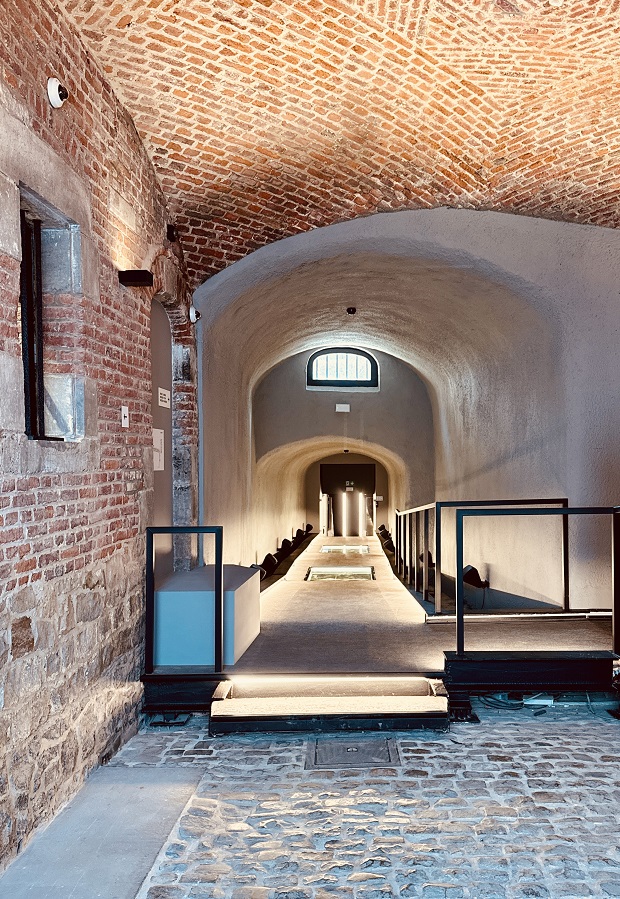
Overlooking the cloistered garden is the Collections House, which explores the colourful history of Mons through the city’s extensive collections. Once the 18th-century home of Jean Lescarts, the building had been empty for 20 years before undergoing transformation.
The museum is accessed from the arts museum via an ancient underground tunnel (pictured above) that once served as a thoroughfare for this former convent gatehouse. Blue stone cobbles, red brick walls and vaulted ceilings along with an immersive auditory installation are testimony to its evocative past. The renovation has sympathetically conserved period features, from flagstone floors to dark beams and the carved, worn oak staircase.
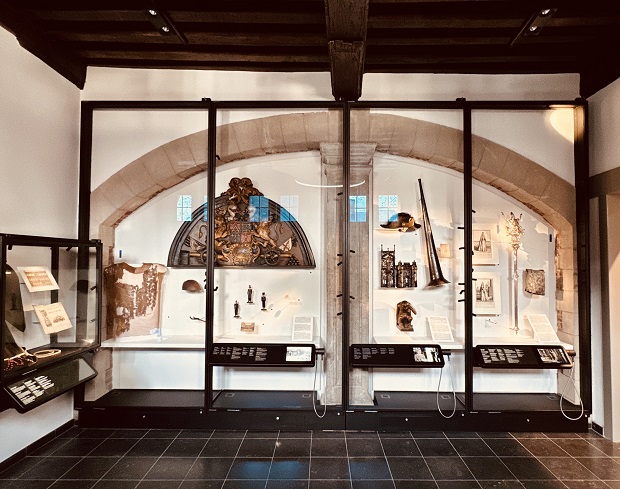
Recounting the story of Mons through modern scenography, the museum ambitiously and chronologically covers numerous elements of the city and region’s history, trade, personalities, environment, social life and character. The ground floor is devoted to interpretative rooms offering a socio-historical panorama, while the upstairs showcases intangible heritage topics. Each room is dedicated to a different thematic, with display cabinets presenting heritage objects and installations providing interpretation information. Installations include bewitching soundscapes charting local music and an emotive but sensitive presentation of the city’s baby box and the mementos left by parents who hoped to later recuperate their abandoned children.
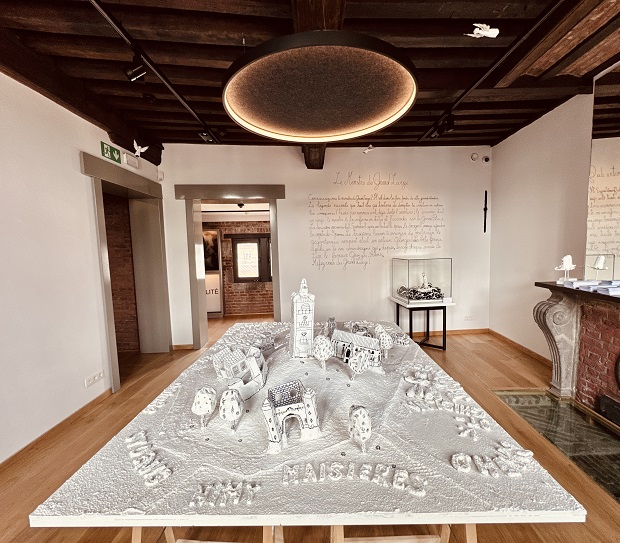
While highlighting local heritage, such as the region’s Borinage coal mines and local prehistoric flint mines, the exhibits explore Mons’ role in important stages of world history. This is as much a museum of discovery as a venue for local citizens. The final space features a large temporary artwork (pictured) about Mons, created in a special workshop attended by an artist, the CAP and city residents.
Director of the Fine Arts Museum Xavier Roland underlines the Mons’ involvement in linking culture with the daily life of citizens in Mons. “We receive constant support from the city and can be really proud of the global energy it creates,” he says.
Art trail
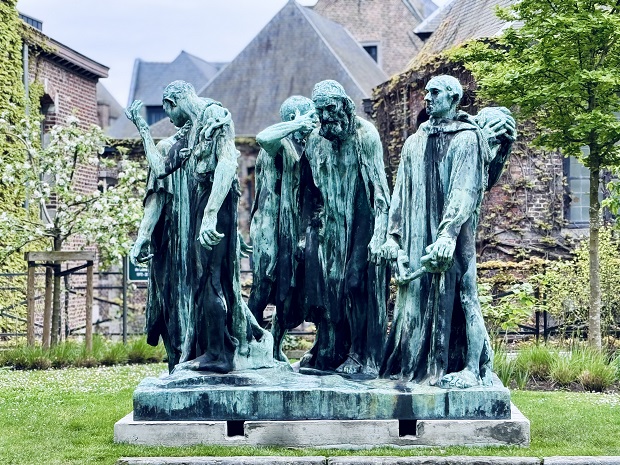
The exhibition on Rodin, running until 18 August, travels beyond the museum’s walls. On public display in the Sainte-Waltrude Collegiate Church are three of Berlinde de Bruyckere’s bronze Archangel sculptures. The contemporary Ghent artist’s work also features in the Rodin show, serving as a modern counterpoint to its thematic on the representation of the body. This dialogue continues in the historic church, with a sculpture by Rodin also gracing the religious interior, renowned for its works by local Renaissance sculptor Jacques Du Broeuck.
The French artist’s major sculpture, The Burghers of Calais (pictured above) is sited in the Mayeur garden. It’s accessible via a flower-bedecked tunnel linked to the Grand Place entrance of the city hall. On loan from the nearby Royal Museum of Mariemont, it was Rodin’s last work, a commission by Calais to commemorate the 14th century volunteers who were ready to sacrifice their lives to the English in order to save the town. It’s a powerful and moving monument that embodies Rodin’s artistry and ability to convey human emotion.
Photos: ©BE CULTURE; Les Bourgeois de Calais-Rodin ©BE CULTURE











